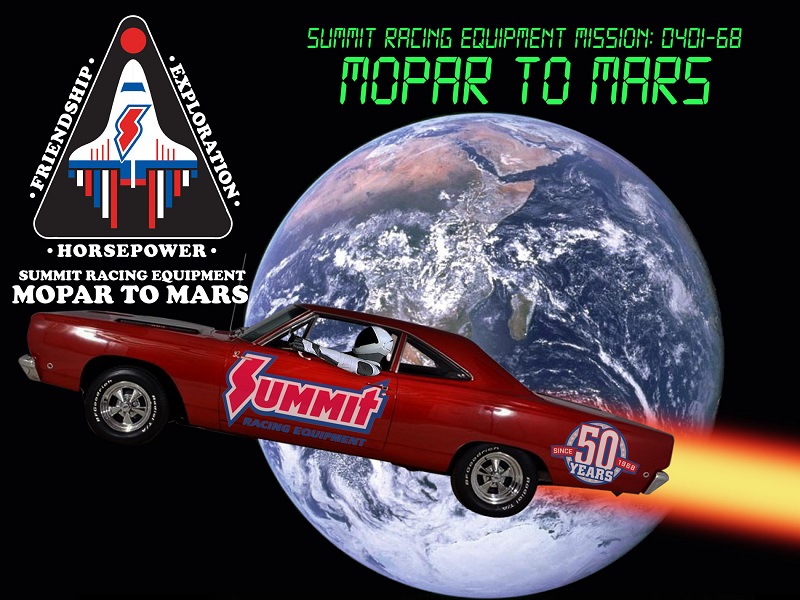
We’re sending a car into space.
And not just any car. A 1968 Plymouth Road Runner sponsored by our friends at Summit Racing, who are celebrating the company’s 50th anniversary and are the ideal partners to help us achieve our goal of putting a vehicle into space that can chase down the Tesla Roadster currently speeding toward the planet Mars.
The Tesla already has a two-month head start, but we think the Hemi-powered Mopar can catch it—and we intend to prove it.
The OnAllCylinders staff leveraged the help of some of Northeast Ohio’s finest aerospace firms to devise methodologies for a successful space launch, including the Cleveland, OH-based NASA Glenn Research Center as well as the Ohio Aerospace Institute, with major additional support from Northeast Ohio supermarket chain Acme Fresh Markets which was savvy enough to embrace our genius Road Runner theme and help us with our Acme rockets*.
You might be wondering: What is this, guys—some kind of publicity stunt?
YES. There is no profitable way that we’ve discovered to send muscle cars to space. But it’s an awesome idea, right? We’re sending a 426-powered Mopar to win an interplanetary race against an insanely fast all-electric Tesla Roadster. If you can’t get behind that, then you’re probably in desperate need of more Easter candy—Peeps or chocolate bunnies. We’ll support you either way.
The Tesla Competition
In case you missed it, SpaceX and Tesla made headlines in February by sending a Tesla Roadster to space as part of the maiden voyage of SpaceX’s newest rockets—the Heavy Falcon. If an extraterrestrial entity comes across an Earth-made—and more specifically, an American-made—automobile floating through space, we believe strongly that the elephant-engined ‘68 Road Runner is a better representative than the impressive, but definitely less-awesome, all-electric Roadster.
The 5 Space-Launch Methodologies
The aerospace engineers at NASA Glenn Research Center helped us devise five space-launch methodologies we believed could break through Earth’s gravitational orbit with enough force to ultimately chase down the Mars-bound Tesla.
Those advanced methods include:
- Mechanical Reverse-Gravity Thrust Magnification
- Liquid Catalyst Propulsion
- Noble Gas Buoyancy
- Hydro-Pneumatic Propulsion
- Kinetic Energy Harness
To say we’re excited about this space launch would be an understatement, as this is the biggest project we’ve undertaken with Summit Racing since the announcement of Summit Racing The Movie last year, as well as the viral story from 2014 about a treasure trove of classic cars that were uncovered buried beneath an Ohio construction site.
…
Launch #1 – Mechanical Reverse-Gravity Thrust Magnification
One of the primary reasons we chose the Road Runner was because of its reputation for being tough enough to take a hit.
According to Graveyard Carz, the Road Runner was popular among moonshiners because the car could outrun most police cars and absorb rough landings “which is also useful when you’re trying to outrun the clutches of the law.”
While we didn’t plan on being involved in any run-ins with the law, we had to consider the possibility of a rough landing on the surface of Mars, or—in the unlikely event of launch failure—a substantial impact with the ground here on Earth.
We worked closely with the Acme supermarket team to diagram the launches.
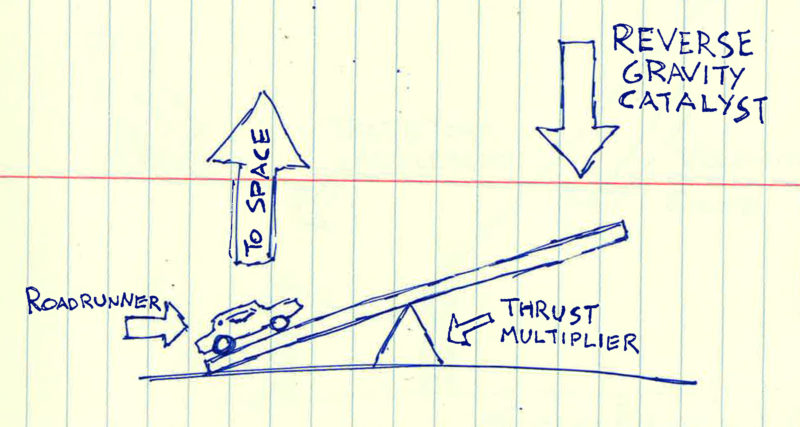
Watch the Mechanical Reverse-Gravity Thrust Magnification launch here:
It occurred to us after our initial failed launch attempt that in our Road Runner story, we might actually be Wile E. Coyote, rather than the indestructible, beep-beeping bird.
We had an argument with our aerospace advisers about whether our $48.33 budget was enough to realistically compete with SpaceX and Tesla founder Elon Musk’s $110-million investment in the Falcon Heavy launch on February 6.
We feel like we won that argument using science and reason**.
We used some Acme Adhesive Aeronautical Restoration Fastener (with varying degrees of success) to prepare our trusty Plymouth for our subsequent launch attempts.
…
Launch #2 – Liquid Catalyst Propulsion
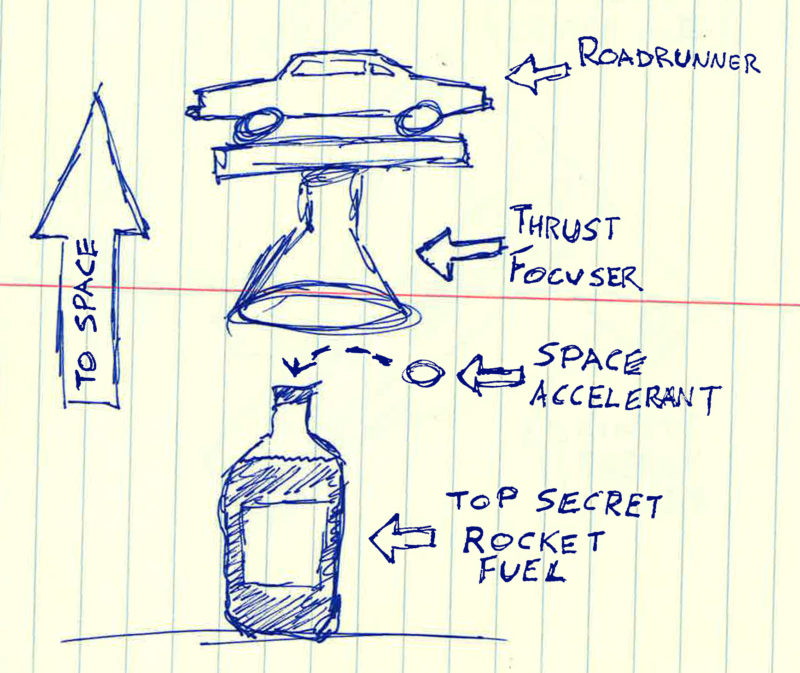
Watch the Liquid Catalyst Propulsion launch here:
…
Launch #3 – Noble Gas Buoyancy
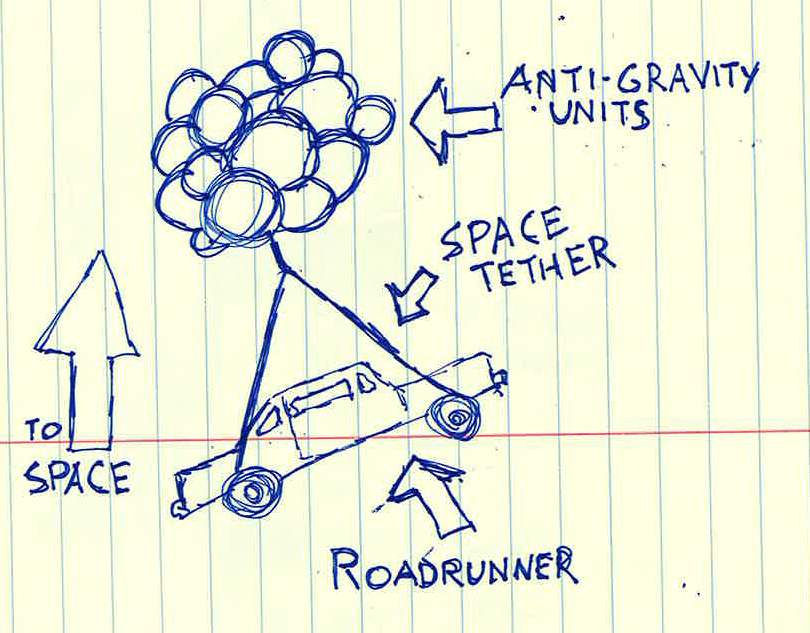
Watch the Noble Gas Buoyancy launch here:
…
Launch #4 – Hydro-Pneumatic Propulsion
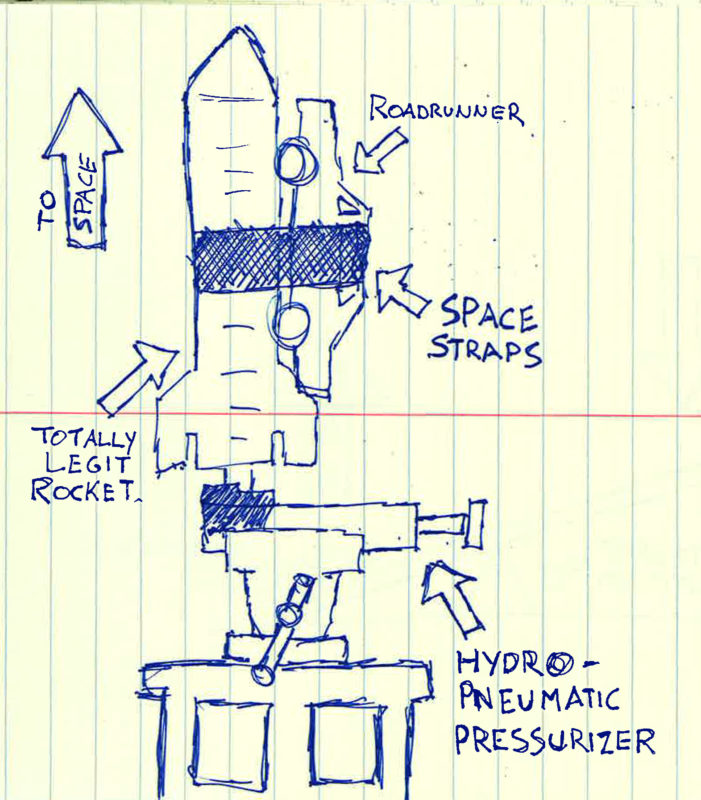
Watch the Hydro-Pneumatic Propulsion launch here:
…
Launch #5 – Kinetic Energy Harness
Watch the Kinetic Energy Harness launch here:
…
Unless you’re among our very favorite readers, you’ve determined with expertly honed instincts and keen observation skills that this predominantly juvenile exercise was a not-very-elaborate April Fools’ Day gag.
So, for the record—Happy April Fools’ Day. We shot for space, but near as we can tell, never even cleared the top of the house.
More significantly, to all who celebrate it, we at OnAllCylinders and the Summit Racing Equipment families wish you and yours a very happy and blessed Easter.
…..
Notes:
*This was entirely made up. NASA, the Ohio Aerospace Institute, and Acme Fresh Markets wisely had nothing to do with this, and we apologize if even joking about it offends them.
**We don’t really think that. We’re smart about a handful of things. The science and mathematics of space travel are not among them.

(Image/OnAllCylinders)


Serious chuckles there. Happy April first to you too. Let the others try and figure it out.
That’s funny as heck. Very creative. Nothing wrong with a Hemi Road Runner, either. Well done.
noble gas ftw. that was funny.